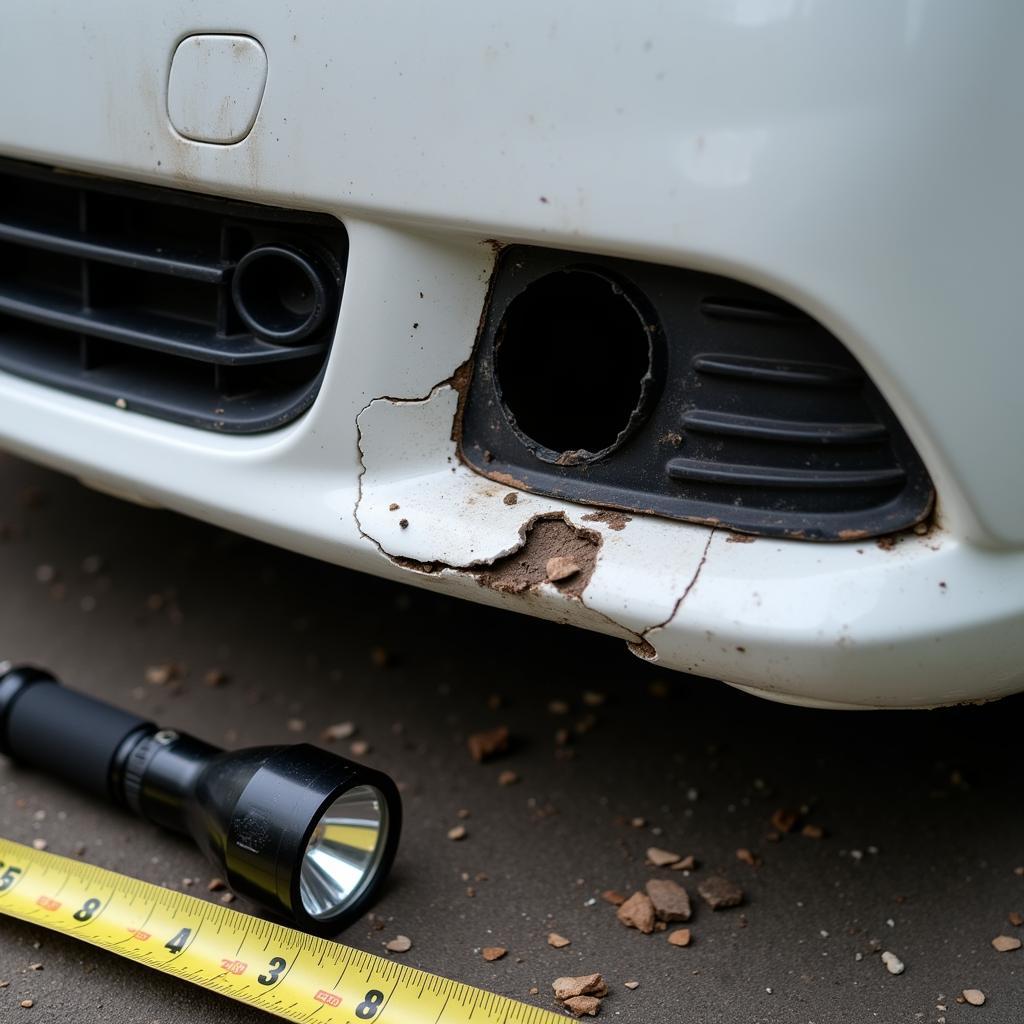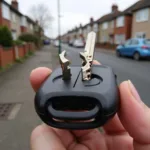Fixing a hole in your car bumper can seem daunting, but with the right tools and a bit of patience, you can often repair it yourself and save a considerable amount of money compared to a professional repair. This guide will walk you through the steps on how to repair car bumper hole, from assessing the damage to achieving a professional-looking finish.
Assessing the Damage and Gathering Supplies
Before you begin, carefully examine the hole in your bumper. Is it a small puncture, a large crack, or a chunk missing entirely? The extent of the damage will determine the best repair method. For minor holes and cracks, a simple plastic repair kit might suffice. However, larger damage might require more advanced techniques like plastic welding or even bumper replacement. Once you’ve assessed the damage, gather the necessary supplies. You’ll likely need items like sandpaper, cleaning solution, plastic filler (specifically designed for bumpers), a putty knife, primer, paint, and clear coat. You can find a helpful selection of supplies in car bumper repair kits.
For those dealing with damage underneath their car, check out our guide on how to repair bumper undernath car for specific instructions.
Preparing the Bumper for Repair
Clean the area around the hole thoroughly with soap and water, then degrease it with a specialized cleaning solution. This step is crucial for proper adhesion of the repair materials. Next, use sandpaper to roughen the surface around the hole. This creates a better surface for the plastic filler to bond with. Remember to remove any loose or flaking paint or plastic. For localized repairs in specific areas like Tameside, you might find specialized services like those offered by car bumper repairs tameside.
Applying the Plastic Filler and Shaping
Mix the plastic filler according to the manufacturer’s instructions. Using a putty knife, apply the filler to the hole, ensuring it fills the cavity completely and overlaps the surrounding area slightly. Allow the filler to dry and harden completely. Once dry, use sandpaper to shape the filler, blending it seamlessly with the bumper’s surface. This is where patience and attention to detail are key to achieving a smooth, even finish. For more extensive bumper damage, you might want to refer to our guide on car bumper damage repair.
Priming, Painting, and Finishing
After sanding, apply a thin, even coat of primer to the repaired area. Primer promotes better adhesion of the paint and helps to hide any imperfections. Once the primer is dry, apply several thin coats of paint that matches your car’s color, allowing each coat to dry before applying the next. Finally, apply a clear coat to protect the paint and give the bumper a glossy finish. Cork offers excellent car repair services, you can find more information here: car bumper repair cork.
Conclusion
Repairing a car bumper hole yourself can be a rewarding experience, saving you money and giving you a sense of accomplishment. By following these steps and exercising patience, you can achieve a professional-looking repair that will restore your bumper’s appearance. Remember, how to repair car bumper hole effectively depends on the severity of the damage and requires the right materials and techniques.
FAQ
- Can I repair a large hole in my bumper myself?
- What type of plastic filler should I use for bumper repair?
- How long does it take for the plastic filler to dry?
- What type of paint should I use for my bumper?
- Do I need to apply a clear coat after painting?
- How can I prevent future bumper damage?
- Where can I find professional help if I can’t repair the hole myself?
Need further assistance? Contact us via WhatsApp: +1(641)206-8880, or Email: [email protected]. Our customer support team is available 24/7.


